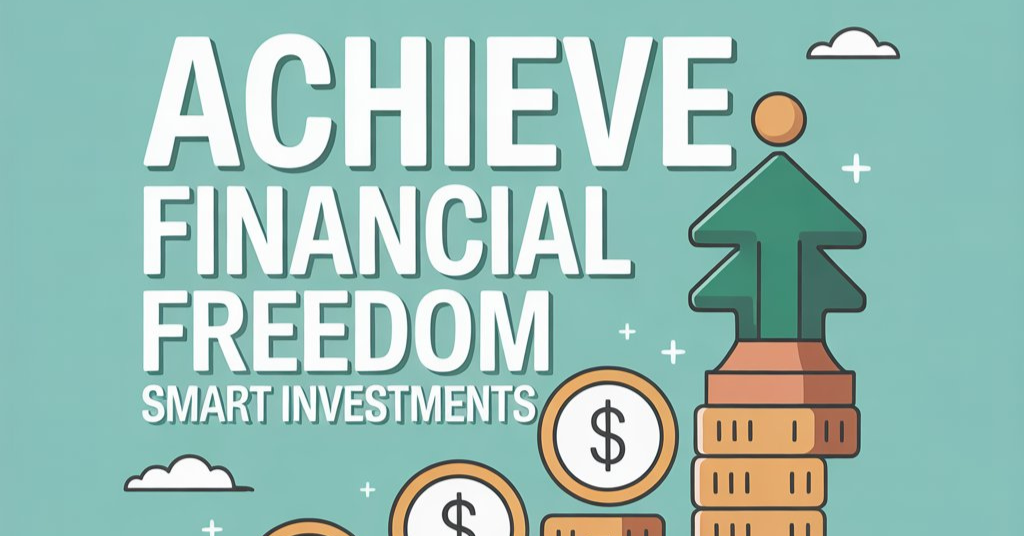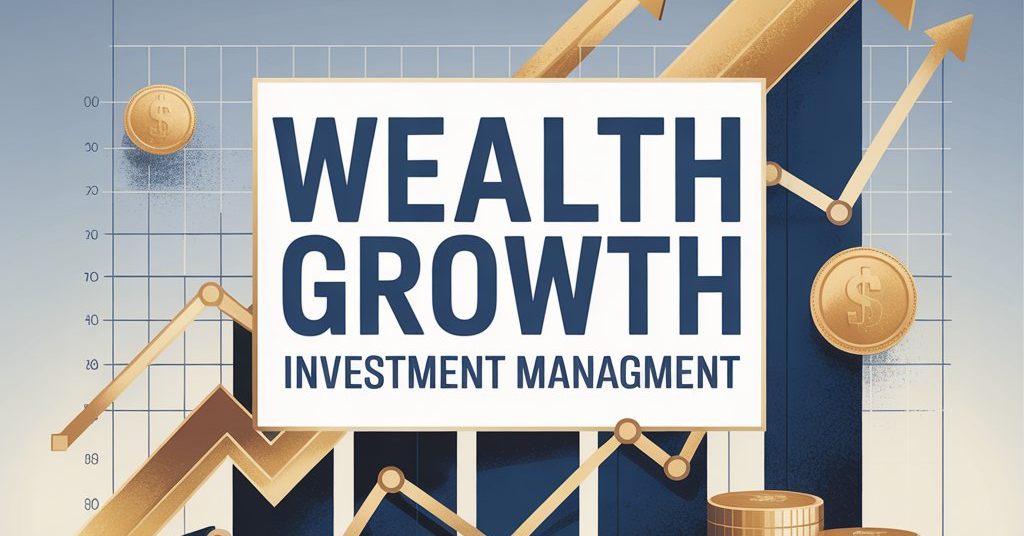Financial freedom is a dream many Americans share — the ability to live without constant financial stress, make choices without worrying about money, and enjoy life on your own terms. But how do you actually reach that point? The answer lies in combining smart financial habits with smart investments that build wealth over time.
In this blog, we’ll explore what financial freedom really means, habits that support to Achieve financial freedom Smart investments, step-by-step strategies, real-life calculations, and examples that show how consistent investing can change your financial future.
What Does Financial Freedom Mean?
Financial freedom is not about being “rich” or having millions in the bank. Instead, it means:
- Having enough savings and investments to cover your living expenses.
- Living without paycheck-to-paycheck stress.
- Being prepared for emergencies and retirement.
- Having the flexibility to work because you want to, not because you have to.
For most Americans, achieving this level of security means practicing disciplined money habits and making investments that grow faster than inflation.
Habits: Achieve Financial Freedom Smart Investments
Smart investments are powerful, but they only work if you combine them with good habits. Here are the most important ones:
- Set Clear Goals
Example: “I want $50,000 in retirement savings by age 40” or “I want to pay off $20,000 of debt in 5 years.” - Budget Consistently
Use a budgeting app to track income and expenses. If you earn $5,000/month, set aside at least 20% ($1,000) for savings and investments. - Pay Off High-Interest Debt
Credit card debt with 18% APR eats away returns. Paying this off first is smarter than investing until it’s gone. - Automate Savings
Set automatic transfers to investment accounts so you “pay yourself first.” - Live Below Your Means
Avoid lifestyle inflation. If you get a raise, invest the extra instead of spending it. - Protect Your Credit Score
A higher score means lower loan interest rates — saving thousands over time.
These habits create the foundation. Now, let’s move to investment strategies that make your money work for you.
Building Your Investment Foundation
1. Emergency Fund Comes First
Before investing, secure 3–6 months of expenses.
- If your monthly expenses = $3,500, then build a fund of $10,500–$21,000.
- Keep it in a high-yield savings account for safety and accessibility.
2. Use Tax-Advantaged Accounts
- 401(k): Employer matches are “free money.” Contribute enough to get the full match.
- Roth IRA/Traditional IRA: Tax benefits vary by income and future expectations.
- HSA (Health Savings Account): Triple tax benefits for those with high-deductible health plans.
3. Diversify Investments
Spread money across different asset classes:
- Stocks (growth)
- Bonds (stability)
- Real estate (passive income and inflation hedge)
4. Choose Low-Cost Index Funds
High fees can erode wealth. Index funds like the S&P 500 ETF often average 7–10% annual returns long term.
5. Practice Dollar-Cost Averaging
Investing monthly (e.g., $500/month) reduces the risk of market timing and smooths returns.
6. Rebalance Annually
If your portfolio drifts from 80% stocks / 20% bonds to 90% / 10%, rebalance back to your chosen risk tolerance.
Example: The Power of Compound Growth
Let’s calculate how investing small amounts grows into financial freedom.
Scenario:
- Age: 30
- Salary: $70,000/year
- Monthly investment: $1,000
- Investment return: 7% annually
- Investment duration: 30 years (age 30–60)
Formula (Future Value of monthly investment):
👉 At age 60, you’ll have over $1.2 million.
If you withdraw 4% per year (a common safe retirement rule), that’s $48,720/year — nearly covering average living expenses without touching the principal.
Why Starting Early Matters
Suppose two people invest $500/month, both earning 7% returns:
- Investor A starts at 25 → 40 years investing = $1,057,000
- Investor B starts at 35 → 30 years investing = $609,000
A 10-year head start nearly doubles the wealth, even though both invested the same monthly amount.
Example: Paying Debt vs. Investing
Imagine you have $10,000 in credit card debt at 18% APR. If you invest $500/month instead of paying debt:
- Investment returns ~7% → growth, but your debt is losing money at 18%.
- Over a year, debt adds $1,800 in interest — more than the $700 growth on $10,000 invested.
👉 Always pay off high-interest debt first, then invest.
Different Smart Investment Options
1. Stock Market Investments
- Index Funds/ETFs: Example: Invest $10,000 → at 8% return for 20 years = $46,610.
- Dividend Stocks: Pay regular cash dividends that can be reinvested or used as income.
2. Bonds
Stable but lower returns. Useful for balancing risk, especially near retirement.
3. Real Estate
- Rental property: Buy $200,000 home, $50,000 down, rent = $1,500/month → $18,000/year income.
- Cash-on-cash return = 36%, plus property may appreciate in value.
- REITs (Real Estate Investment Trusts): Lower entry barrier, passive income from properties.
4. Alternative Investments
- Peer-to-peer lending
- Commodities like gold
- Small side businesses or startups
These are riskier but can diversify income streams.
Roadmap to Achieve Financial Freedom
Here’s a 12-month actionable plan:
| Month | Action Step | Example |
| 1 | Write down financial goals | “Retire at 55 with $1M” |
| 2 | Create a budget | Save 20% of $5,000 = $1,000/month |
| 3 | Pay off high-interest debt | Target credit cards first |
| 4 | Open retirement accounts | Contribute to 401(k), Roth IRA |
| 5 | Automate savings | $500/month auto-transfer |
| 6 | Build emergency fund | Target $20,000 |
| 7–8 | Learn investment basics | Read about ETFs, index funds |
| 9 | Start passive income | Dividend stocks or real estate |
| 10 | Review insurance | Health, disability, life |
| 11 | Rebalance portfolio | Adjust stock/bond ratio |
| 12 | Evaluate progress | Net worth checkup |
Common Challenges and How to Overcome Them
| Challenge | Impact | Solution |
| High-interest debt | Eats returns | Pay debt first |
| Emergencies | Force early withdrawals | Build 6-month fund |
| Market downturns | Panic selling | Stay long term, diversify |
| Inflation | Reduces buying power | Invest in growth assets |
| Lifestyle inflation | Less savings | Invest raises instead of spending |
What Financial Freedom Looks Like
Financial freedom doesn’t always mean retiring early. It could mean:
- Working part-time and spending more time with family.
- Traveling without financial stress.
- Paying for children’s education debt-free.
- Retiring on your own terms.
Final Thoughts
Financial freedom is not an overnight achievement. It’s the result of consistent habits, smart investments, and patience. Start by clearing debt, building an emergency fund, then invest consistently in diversified, low-cost funds.
The earlier you start, the more powerful compounding becomes. Whether you aim to retire early, travel the world, or simply live stress-free, smart investments are your roadmap to financial independence.



